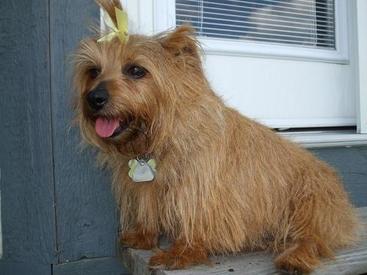
This article also relates to: Norwich Terrier
Officially recognised as separate breeds by the American Kennel Club in 1979, the Norfolk and Norwich Terriers were first developed in East Anglia for the working purposes of ratting and bolting foxes on the hunt. It is widely thought that the red Cairn, Dandie Dinmont and Glen of Imaal Terriers contributed to the early development of the breed, predominantly owned by Norfolk gypsies to keep their living areas free of vermin. Records suggest that prior to World War I, a large number of Norfolk Terriers were imported to America by Frank Jones, something which led to a temporary change of name for the breed; originally known as the Cantab Terrier, then the Trumpington Terrier after Trumpington Street where it was first seen, the Norfolk became the Jones Terrier for a short period.
Low to the ground, the Norfolk Terrier boasts short legs, a defined, wedge-shaped muzzle, small, triangular ears and a relatively square body structure. Black toenails are seen on the breed, and the coat is typically a moderate to long length, commonly observed in colours of grizzle, black and tan, wheaten and red, usually with the appearance of white markings. Despite being an illegal practice across Europe, tail 'docking' is often undertaken in the breed, reducing the natural length of the tail. The weatherproof coat will have protected the dog as it worked the rustic landscape, burrowing into fox dens through mud and bracken.
One of the smallest of the working Terriers, the breed is energetic and fun-loving, engaging well with children and being enthusiastic in exercise and play. An intelligent and curious breed, it is not uncommon for the Norfolk Terrier to attempt an escape, often appearing stubborn and disobedient when left to its own devices. When shown firm leadership, consistent training and early socialisation, the Norfolk Terrier is an affectionate, loyal and mannered breed, displaying a relaxed and contented temperament that makes for an ideal companion. On average, a healthy Norfolk Terrier will weigh 4-6 kg, with a life expectancy of 12-15 years.
The Norfolk Terrier is generally very healthy and long-lived, susceptible to no serious known breed-specific diseases. However, as with most canine breeds there are documented cases of hip dysplasia, skin allergies, optical disorders and epilepsy.
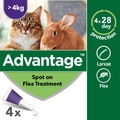

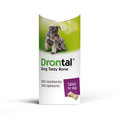



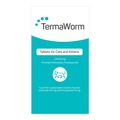
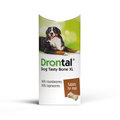
From Leicestershire, United Kingdom
Poppy is very typical of breed - very much a mind of her own and very bright! Sweep is bit more reserved, really wants human company but does suffer from Epilepsy - on medication.
From Suffolk, United Kingdom
Swift is our second pedigree Norfolk. We also had a 50% Norfolk.
We have taken her on aged 5 from her breeder, as she is now retired from ring and breeding duties. She is perfect company, she keeps our garden free of squirrells and following 2 months without a dog she has also given the local cats a shock.
She is a good watch dog, but is also the postman, delivery and window cleaner's best friend! She is friendly to other dogs on walks, and although we are an adult household she is friendly to child visitors. She has found a despatched a rat in the barn and now keeps up patrol for others.
We have found norfolk terriers quick and intelligent, they require some training but pick up commands for a happy life in the home.